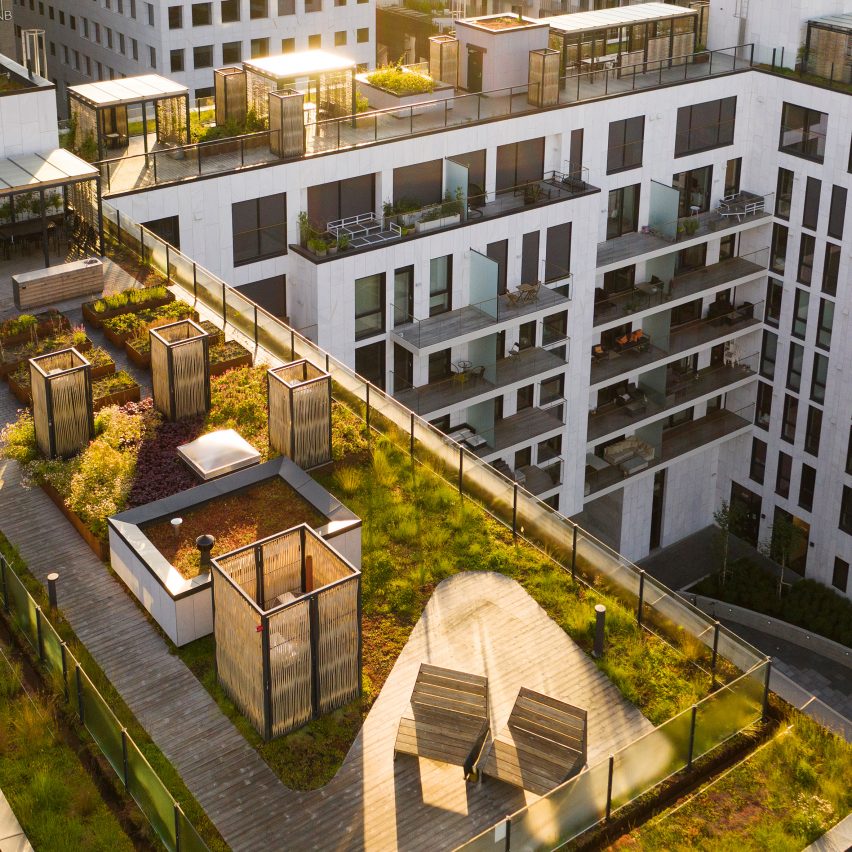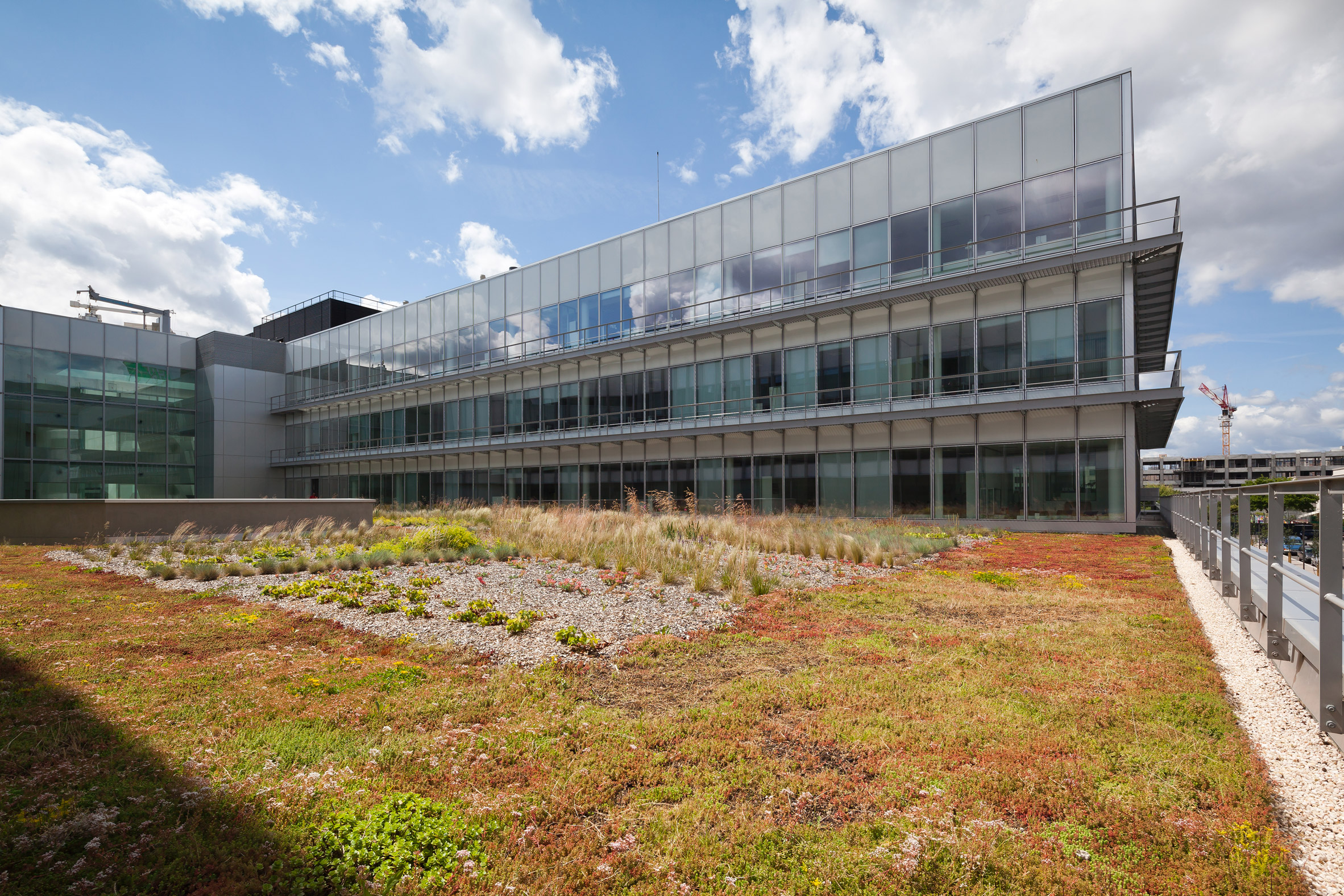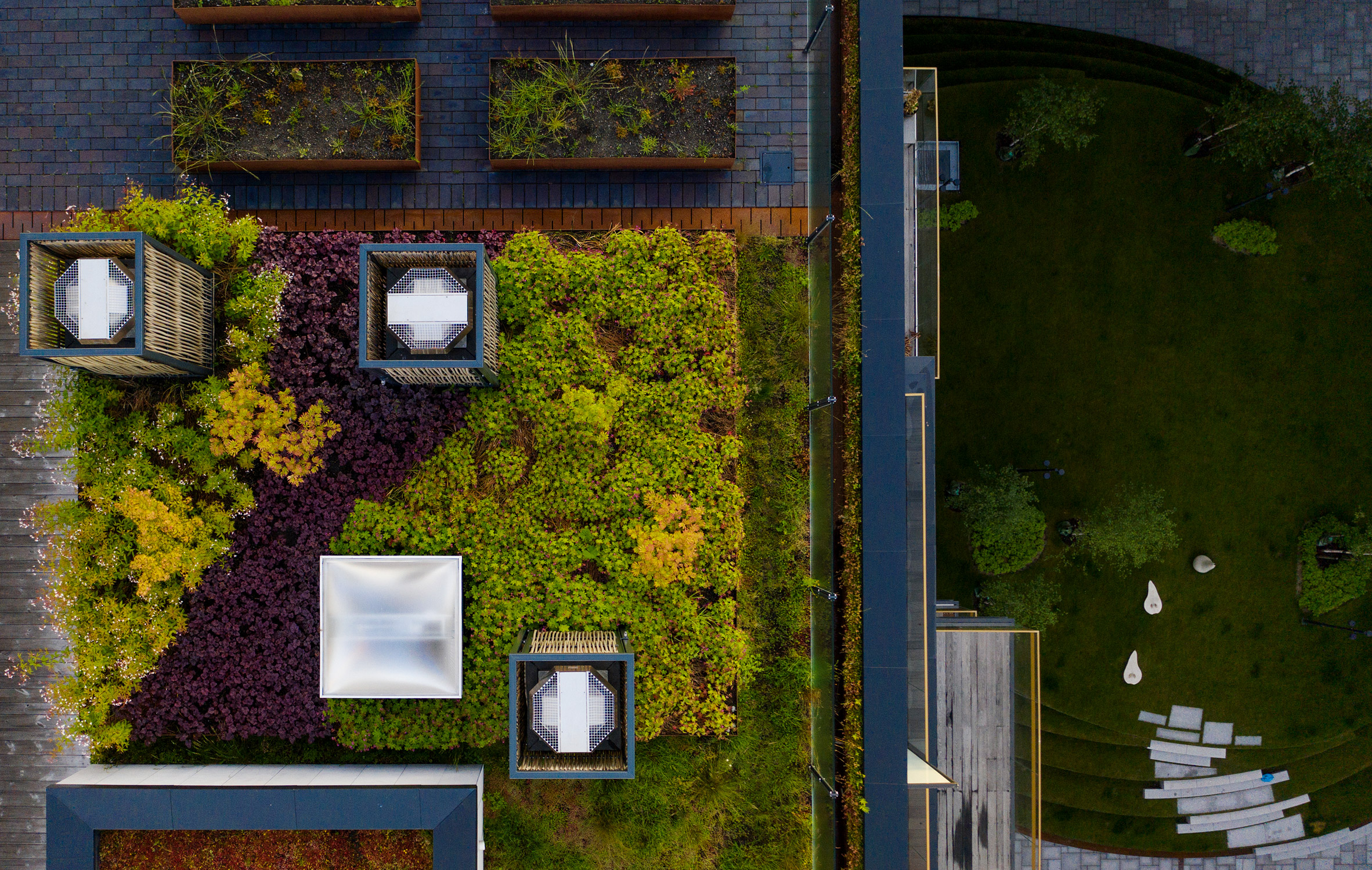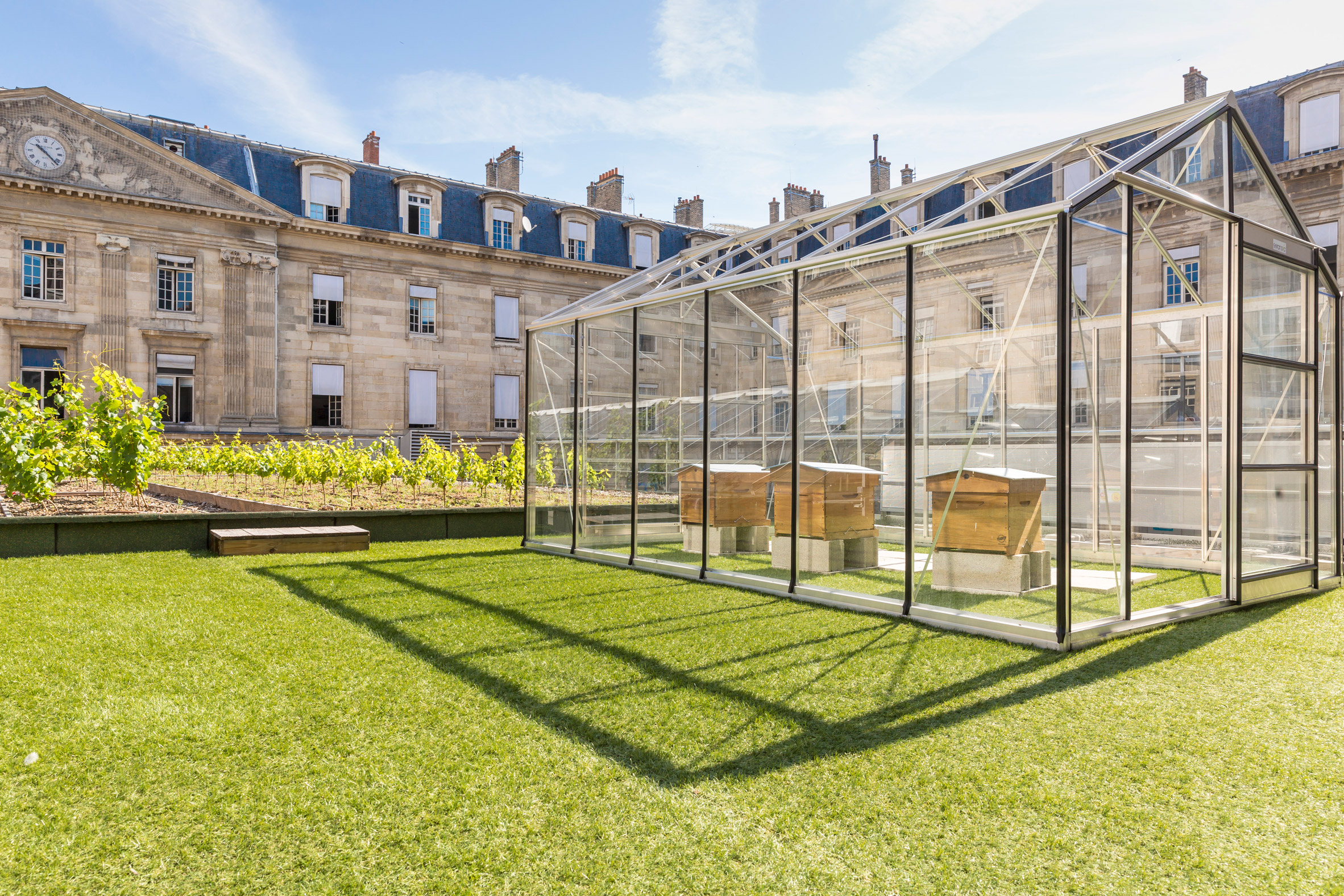
Dezeen promotion: Research conducted by Europe's largest roofing and waterproofing company BMI Group reveals the opportunities presented by "active" blue and green roofs.
BMI Group recently published a report titled The Architect Effect, which reexamined the role of the modern architect, suggesting ways that architects can "regain their influence" in today's construction industry and create better outcomes for clients.
Making better use of roofs is one of the solutions, explains BMI Group, as the potential to incorporate active roofs into buildings is not always considered.
In order to bring to life a part of the structure that would otherwise remain unused, the report highlights the need for a good knowledge of innovative materials, the ability to collaborate and negotiate with the different specialists involved in a given project, and familiarity with innovative tools that can help to make the case for such investment.

With extensive experience in blue and green roofs, BMI Group has helped create numerous examples of innovative use-cases for roofs. These include a blue roof used to create a water reservoir that can be used to water plants or to serve building occupants.
Green roofs, on the other hand, have been used to create urban farms and vineyards, a haven for wildlife, "a garden in the sky", or a playground for children.
"Roofs have historically been an under-utilised part of the building," said a spokesperson from BMI Group.
"It's the final piece of the design puzzle, the place where cost-cutting is most likely to occur, and the bit that can often take a back seat to more prominent design features of the building such as the facade or windows. But all that is starting to change."
"With a renewed focus on sustainability, not to mention the implications of mass urbanisation, clients, contractors, architects and building regulators are beginning to see the value - both commercially and for the planet - that an innovative roof can create."

A survey conducted by the company showed that over 70 per cent of architects feel that there are opportunities to consider greater roof functionality at the concept design stage.
Considering this statistic, BMI Group was surprised to find that only 25 per cent of architects are interested in roofing that increases biodiversity and green space. "This feels like a missed opportunity," the company said.
The company has been involved in several active roofing projects in Paris since the city set a goal of implementing 100 hectares of green roofs by 2020.

Projects include the Hôtel de Ville – Paris' city hall – where a hanging garden was added. This required creating a 1,000 metre-squared water reservoir on the roof, which was previously inaccessible, that will be used to water the greenery.
An orchard, vegetable patches and a vineyard were also installed on the roof – elements that all contribute to reducing the "urban heat island" effect, as well as improving the air quality around the building.

Another example is L'Oreal's research centre in Saint-Quentin, which architect Frederic Tomat designed to have a self-watering green roof and terrace spaces, provided by BMI Group.
"In addition to its aesthetic appeal, the green roof provides a reliable, low-maintenance solution that makes a huge contribution to the building's overall environmental profile through its excellent thermal performance and ecological water management," said the company.
"Thanks to this and the use of solar energy, it has qualified for Outstanding Sustainable Building certification – a first for any research centre."
More information on BMI's roofing solutions, their research into this area, and on green and blue roofs specifically, can be found on its website.
The post BMI Group showcases blue and green roofs that double as water reservoirs and gardens appeared first on Dezeen.
from Dezeen https://ift.tt/2BnmJCQ
No comments:
Post a Comment